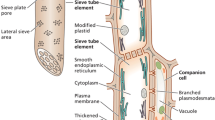Abstract
The radical pair model of magnetoreception predicts that magnetic compass orientation can be disrupted by high frequency magnetic fields in the Megahertz range. European robins, Erithacus rubecula, were tested under monochromatic 565 nm green light in 1.315 MHz fields of 0.48 μT during spring and autumn migration, with 1.315 MHz being the frequency that matches the energetic splitting induced by the local geomagnetic field. The birds’ responses depended on the alignment of the oscillating field with respect to the static geomagnetic field: when the 1.315 MHz field was aligned parallel with the field lines, birds significantly preferred northerly directions in spring and southerly directions in autumn. These preferences reflect normal migratory orientation, with the variance slightly increased compared to control tests in the geomagnetic field alone or to tests in a 7.0 MHz field. However, in the 1.315 MHz field aligned at a 24° angle to the field lines, the birds were disoriented in both seasons, indicating that the high frequency field interfered with magnetoreception. These finding are in agreement with theoretical predictions and support the assumption of a radical-pair mechanism underlying the processes mediating magnetic compass information in birds.

Similar content being viewed by others
References
Batschelet E (1981) Circular Statistics in Biology. Academic Press, London New York
Canfield J, Belford RL, Debrunner P, Schulten K (1994) A perturbation theory treatment of oscillating magnetic fields in the radical pair mechanism. Chem Phys 182:1–18
Cintolesi F, Ritz T, Kay C, Timmel C, Hore P (2003) Anisotropic recombination of an immobilized photoinduced radical pair in a 50 μT magnetic field: a model avian photomagnetoreceptor. Chem Phys 294:385–399
Edmonds DT (1996) A sensitive optically detected magnetic compass for animals. Proc R Soc Lond B 263:295–298
Henbest KB, Kukura P, Rodgers CT, Hore PJ, Timmel CR (2004) Radio frequency magnetic field effects on a radical recombination reaction: a diagnostic test for the radical pair mechanism. J Am Chem Soc 126:8102–8103
Kirschvink J, Gould J (1981) Biogenic magnetite as a basis for magnetic field detection in animals. Biosystems 13:181–201
Ritz T, Adem S, Schulten K (2000) A photoreceptor-based model for magnetoreception in birds. Biophys J 78:707–718
Ritz T, Thalau P, Phillips JB, Wiltschko R, Wiltschko W (2004) Resonance effects indicate a radical-pair mechanism for avian magnetic compass. Nature 429:177–181 (DOI 10.1038/nature02534)
Schulten K (1982) Magnetic field effects in chemistry and biology. Festkörperprobleme 22:60–83
Wiltschko R, Wiltschko W (1995) Magnetic orientation in animals. Springer Verlag, Berlin, Heidelberg, New York
Wiltschko W, Wiltschko R (2002) Magnetic compass orientation in birds and its physiological basis. Naturwissenschaften 89:445–452 (DOI 10.1007/s00114-002-0356-5)
Wiltschko W, Wiltschko R, Munro U (2000a) Light-dependent magnetoreception: does directional information change with light intensity? Naturwissenschaften 87:36–40
Wiltschko W, Wiltschko R, Munro U (2000b) Light-dependent magnetoreception in birds: the effect of intensity of 565-nm green light. Naturwissenschaften 87:366–369
Wiltschko W, Gesson M, Wiltschko R (2001) Magnetic compass orientation of European robins under 565 nm green light. Naturwissenschaften 88:387–390
Wiltschko W, Munro U, Ford H, Wiltschko R (2003) Magnetic orientation in birds: non-compass responses under monochromatic light of increased intensity. Proc R Soc Lond B 270:2133–2140 (DOI 10.1098./rspb.2003.2476)
Wiltschko W, Gesson M, Stapput K, Wiltschko R (2004) Light-dependent magnetoreception in birds: interaction of at least two different receptors. Naturwissenschaften 91:130–134 (DOI 10.1007/s00114-003-0500-x)
Woodward J, Timmel C, McLauchlan K, Hore P (2001) Radio frequency magnetic field effects on electron-hole recombination. Phys Rev Lett 87:Art-No. 077602
Woodward J, Timmel C, Hore P, McLauchlan K (2002) Low field RYDMR: effects of orthogonal static and oscillating magnetic fields on radical recombination reactions. Mol Phys 100:1181–1186
Yorke E (1979) A possible magnetic transducer in birds. J Theor Biol 77:101–105
Acknowledgements
Our work was supported by the Deutsche Forschungsgemeinschaft (W.W.) and by the Fetzer Institute (T.R.). We gratefully acknowledge the technical support of the T-Systems, Germany, especially of H. Küpper, T. Loppnow and B. Marx, and we thank F. Galera, S. Hilmer, C. Koschella and S. Münzner for their valuable help with bird keeping and conducting the experiments
Author information
Authors and Affiliations
Corresponding author
Rights and permissions
About this article
Cite this article
Thalau, P., Ritz, T., Stapput, K. et al. Magnetic compass orientation of migratory birds in the presence of a 1.315 MHz oscillating field. Naturwissenschaften 92, 86–90 (2005). https://doi.org/10.1007/s00114-004-0595-8
Received:
Accepted:
Published:
Issue Date:
DOI: https://doi.org/10.1007/s00114-004-0595-8




